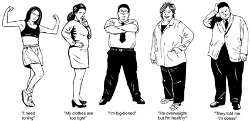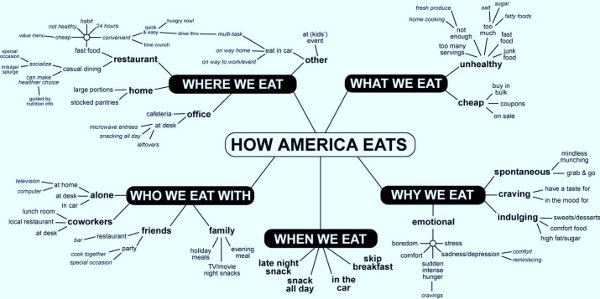OBESITY NOW "OFFICIALLY" A DISEASE: IS THERE A CURE? (HINT: LOOK TO CULTURE)
To underscore the severity of one of our nation's greatest health concerns, the American Medical Association (AMA) officially recognized obesity as a disease, an announcement that could have influential effects on the healthcare system and physicians' views on the topic. This is but one more headline in the long, sad saga of the American public's state of health. And, once again, we are compelled to say what we have said before: few appear to have any real understanding of the role that everyday cultural habits and dispositions play in America's obesity rates or weight management struggles.
For those who are new to our research and thinking on this topic, and as reminder to all others, here is our take on understanding the big problem with obesity and why culture is an essential piece of the solution.
Most agree that widespread obesity is indeed a major health concern. And many would likely concede that a combination of personal self-control, lower cost, and increasing access to food plays some role in the contemporary obesity crises.
As we've written many times before, we have long been one of the few champions for the voice of culture in such debates regarding obesity. This is not because we foolishly think that culture alone will solve this incredibly complex problem. Rather, we have found that few in American public policy circles have the ability to truly grasp the power of cultural forces in addressing social issues.
Other voices are now joining our line of cultural observation stemming from years of intensive consumer research. For one, health maven Jane Brody preceded the AMA decision with her New York Times article "Many Fronts in Fighting Obesity." In some ways, Ms. Brody's commentary on obesity is an excellent summary of some of the most prevalent views on the root causes of what we can now (officially) call a disease: namely, Americans have been on a collision course for decades between sedentary habits and modern, calorie-laden foods that they eat too much of, both at home and when dining out.
"Willpower rarely helps people who struggle with their weight. With constant temptations to eat more, and especially more high-calorie foods, our society must change. Instead of subsidies for corn used to produce high-fructose corn syrup, let the government subsidize more fresh fruits and vegetables."
-- The New York Times, "Many Fronts in Fighting Obesity," May 20, 2013
As Ms. Brody's comments indicate, obesity is far more profound in its complexity than food habits, lack of exercise, and caloric intake. Paralleling our foundational research in 2004, Obesity in America, in which we defined obesity from the consumer's perspective, research in 2010 found that the "shame factor for fat has diminished."
Consumers perceive how our culture eats as the cause of obesity. Major causal factors derived from language analysis that link to this view relate to food occasions (where we eat, whom we eat with, and when we eat) as well as objective (what we eat) and emotional (why we eat: spontaneous, craving, indulging) constructs, all of which influence cultural eating habits.
Consumers Perceive "How America Eats" As the Cause of Obesity
Source: How America Eats 2011 report, The Hartman Group, Inc.
Solve Obesity: Address Human Behavior
Although consumers attribute the high incidence of obesity to a number of factors, blame is placed squarely on the individual. Consumers nearly unanimously attribute obesity to the individual except in the case of children, where parents are assigned the blame. Consumers clearly understand that obesity is a social problem, where the solution lies at the heart of human behavior. Why can't marketers, policymakers, and others in this debate see this as clearly as consumers do?


